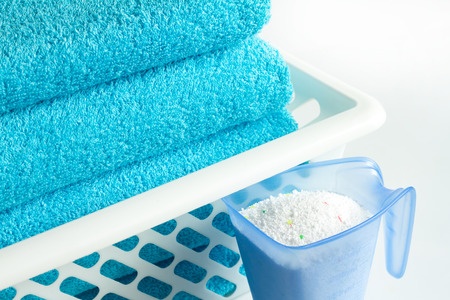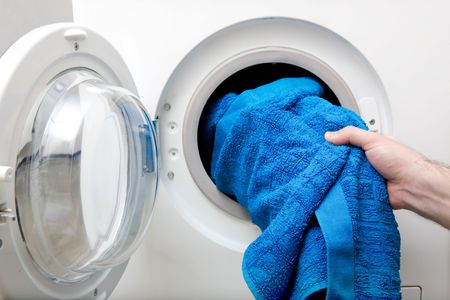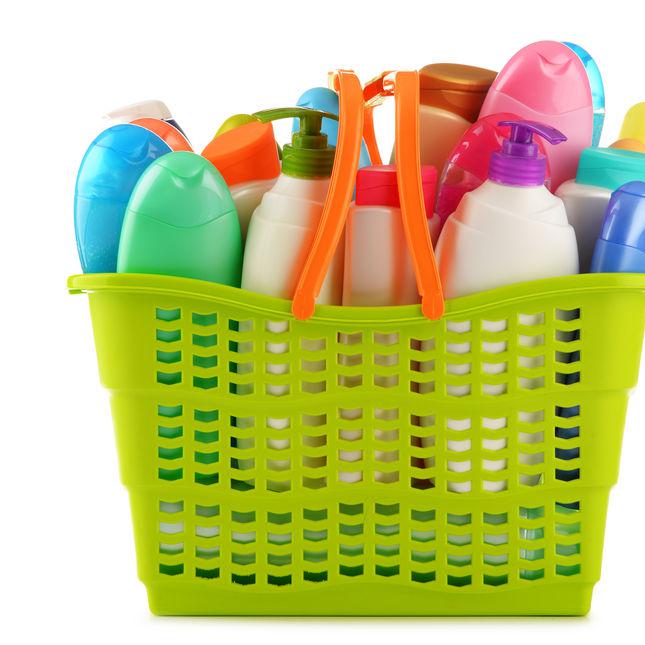- Clean Home
- Laundry Tips & Techniques
- How To Wash Towels
How To Wash Towels So They Last
How to wash towels so they stay soft and absorbent.
If you care for your new towels, they'll keep you and your kids wrapped in post-bubble-bath softness and comfort for at least five years. And they'll look color-correct, too.
That's right: a good-quality towel, properly washed and dried, can arrive with your newborn, stay with him until he starts kindergarten, and look a little worse for wear.
The expected lifespan of a good-to-best-quality towel is 5 to 10 years. The best-quality towels are made from premium fibers, such as Supima or Egyptian cotton. Here's how to wash towels.
How to Wash Towels After You Bring Them Home
Don't just put that new towel on the bathroom hook or towel bar after getting it home.
Get it primed for softness and absorbency before the first use. Many manufacturers add a finish that creates a sleek, soft feel, but this actually diminishes the towel's absorbency.
While these chemicals will rinse out with a few washes, you're often left with a scratchy, rough towel.
First, soak or wash the towel in cold water without detergent or fabric softener to get the fluffiness and absorbency you crave. Then tumble dry low. And only then, into the bathroom, they go.
Wash Towels Separately
Always wash towels separately from the rest of your laundry. This is both for the longevity of the towels and your family's clothes.
Towels can collect lint from co-washed clothes. And clothes with zippers, hooks, and buttons can pull loops out of some terrycloth towels and snag others.
Further, separate dark-colored towels from their lighter cousins. This will keep both the light and dark colors intact.
Wash in Warm Water
The label will tell you whether the towel's fiber wears best in cool-water washings. Otherwise, warm is the best temperature for washing your towels.
Hot water can fade colors and reduce the softness that the kids love. (And hey, who are we kidding here? Moms and Dads love it, too!)
Unless the towel or washcloth has come into contact with an ill family member (which may require a stronger laundry detergent and possibly chlorine bleach), choose a gentle laundry detergent to protect the fibers and color during weekly washings.
Use only half the recommended laundry detergent to keep towels absorbent and soft. Wash towels at least once weekly; if needed, every three to four days.
Wash towel sets together so any color fading is uniform.
Dry Towels Right
Shaking excess water out of your towels before putting them in the dryer will help fluff the terry loops and keep them absorbent.
Tumble-dry towels on a low setting and remove them while still slightly damp.
Excessive heat wears down towel fibers if they're hot (not warm) to the touch coming out of the dryer, you've overdried them.
Skip the Silicone Softeners
Some fabric softeners contain water-repellent silicone, the death knell for towel absorbency. So, skip the fabric softeners when drying a load of towels.
Let Towels Hang Out After Use
You can hang towels loosely on the towel rod or hooks between baths to allow quick air-drying.
This will keep mold at bay, keeping your towels fresher longer and requiring fewer washings (a double plus: less work for you and less machine time for the towels).
- Clean Home
- Laundry Tips & Techniques
- How To Wash Towels









